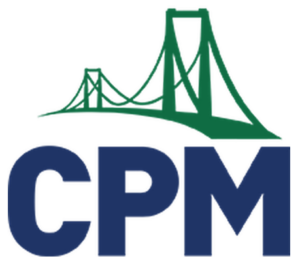Peggy Ratner, Teacher Reporter, Chula Vista, CA
Jo Boaler’s keynote session at the CPM National Conference exposed those of us in attendance to the elephant in the room: the fixed mindset that only some kids are good at math and are born with the ability to do math. Dr. Boaler debunked this myth and provided strong evidence that the brain is actually quite flexible and changeable as long as we continue to get our synapses firing. In other words, we need to embrace the growth mindset.
Why has the elephant been in the room for so long? Media messages in movies and television have played into the math ability myth by portraying math, especially algebra, as some mysterious algorithm that is only accessible to a small percentage of “smart” or “nerdy” individuals. This fixed mindset is especially damaging to girls and students of color. Parents often encourage a fixed mindset by either stating they themselves were never good at math or by constantly praising their children for being smart. A child who considers herself smart may believe the opposite once she encounters a task she cannot immediately master. This may lead her to think that maybe she is not so smart after all. Teachers also contribute to fixed mindsets by how they grade and group students. Ability grouping gives students on both sides of the spectrum a fixed mindset. Teachers grading tasks as either right or wrong also contribute to a fixed math mind set.
A growth mindset, on the other hand, sees the brain as flexible and changeable. Synapses need to be fired to make deep connections. Boaler made the analogy that synapses in our brain will wash away like footprints in the sand unless we learn deeply. She shared a study about drivers for the Black Cab company in London who must learn thousands of routes and pass a rigorous exam to qualify as Black Cab drivers. Brain scans show that the hippocampus in these drivers grew as they studied deeply and prepared for this exam.
The pedagogy in the United States has often made mathematics a “performance” subject rather than a “learning” subject. We tend to favor kids who are procedurally fast rather than those who think slowly and deeply about ideas. Math should not be about the speed in which one can complete “drill and kill” problems because when we face stress, working memory is blocked. It has been found that the lowest achievers are those that use memorization strategies for formulas and procedures whereas the highest achievers are those that think about big ideas and can make connections between these ideas. Boaler shared results of a three-year New York study that compared “tracked” versus “untracked” students. At the end of the three years, the untracked students had the highest achievement rates.
It is the ideas that teachers and students hold about themselves as math learners that can affect the depth of their learning. We need to believe that we can learn anything and every child can excel at math with the right messages. Teachers need to provide math tasks that are open ended, with multiple entry points and approaches to problem solving. Student discourse is vital and making mistakes needs to be encouraged as that is when we get our synapses firing. They fire because the brain is challenged when a mistake is made, resulting in brain growth. We need to give our students the message: “When you make a mistake in math, your brain grows.”
Providing constructive feedback when students do make errors is extremely important. This single sentence: “I am giving you this feedback because I believe in you” positively changed the way students achieved. Boaler even shared a video in the session of her own daughter negatively reacting to a paragraph at the end of each CPM chapter that is written in such a way that might make a student see themselves as less than smart. She asked for suggestions on how this paragraph might be changed. These suggestions were collected to be considered for revisions to the CPM texts.
Boaler stressed that we need to provide tasks that give students the “space to learn.” In a five week summer course that Boaler conducted with Stanford graduate students, underachieving 7th and 8th grade students learned to use algebra as a problem solving tool. Students were asked to think visually about a task involving patterns. They were not asked what the nth pattern would look like nor to count tiles and make a T-table and then come up with an equation. Instead, students discussed about seven different ways that the pattern visually changed for them. The ensuing discussion opened the eyes of students about different ways to approach a problem. These low achieving students remained engaged and discussed math for 40 minutes without interruption. By changing the questioning from “what is the pattern” to “how do you see the pattern,” deeper learning occurred.
Boaler ended her session by encouraging teachers to watch the Stanford videos on mathematics learning on Youcubed.Stanford.edu as well as taking the student on-line class How To Learn Math for Students. These are powerful six to ten minute sessions for students ages ten and up. Students who do not believe in themselves as capable in mathematics, come away feeling empowered to do math after viewing these videos. These videos are also helpful for teachers.
Session 2: Erica Warren, Incorporating the Growth Mindset in Your Classroom
This session was a great and engaging follow up to Dr. Jo Boaler’s keynote address. Erica shared several strategies she has implemented to incorporate the growth mindset in her classroom as well as had us read research that shows the brain can be developed like a muscle.
Erica’s handout and activities followed a lesson plan she has used with her students to help them adopt a growth mind set in all areas of their lives. She had us out of our seats touching two walls, three tables, and the floor to get us to find new partners to interact with. We shared things we are currently not good at but would like to improve, and then saw a Sesame Street video with singer Janelle Monae called “The Power of Yet.” This was followed by us restating our area of improvement with the word “yet” so that my initial statement: “I can’t do Zumba steps” (a fixed mind set) was changed to a growth mind set statement of “I can’t do Zumba steps, yet.”
Students continue developing a growth mind set in Erica’s classroom by watching a Khan Academy video: “You Can Learn Anything” and Erica also shared various posters and slogans that teachers can have in their classrooms to promote the growth mindset:
• Each wrong answer makes your brain stronger.
• Your brain is a muscle. Math class is your daily workout.
• I’ve learned so much from my mistakes I’m thinking of making a few more.
Ideally students will create their own slogans.
Session 12: Erica Warren, Bringing Technology Into Your Classroom
This session stressed that technology is a tool, not a learning outcome. Learning objectives are always math based, but we also need to incorporate strategies for reading, writing, and 21st century skills.
Strategies/applications that Erica used included one of her favorites, Poll Everywhere, in which students can answer a question posed by the teacher upon entering the classroom by using their own hand held devices to submit their answer. Students’ responses are displayed live in Keynote, PowerPoint or on the web. The teacher can quickly check for understanding during class time as well as use it as an exit slip.
Another app Erica had us download was a QR reader. This was an exciting way to do math problems since students would take their device to one of several QR cards posted around the classroom. Their device would “read” the problem and students would solve this one problem with a partner, and once solved would go to another QR card posted in the classroom and repeat the process. This seemed to be a very engaging way to get students to work on word problems by only having to tackle one problem at a time and having the opportunity to get out of their seats to “read” their next problem.
Many other apps along with helpful directions and tips were included in the thorough handout Erica provided. Included were step by step directions and links for using the CPM eTools, Explain Everything, Google Drive/Google Docs and Tiny URL.
A Fortune Cookie activity was incorporated into the session in which participants could read slips of papers with technology fears and concerns listed on them as well as helpful tips. Erica encouraged us to try just one or two new technology applications and incorporate them daily until we and our students are comfortable using them. She also reminded us to always have a back up plan if we plan to use technology for the times that there are “glitches” with the system.
Note: The conference url, https://conf2015.cpmstg.wpengine.com/, will remain active; you can download speaker’s handouts such as Erica Warren’s.

